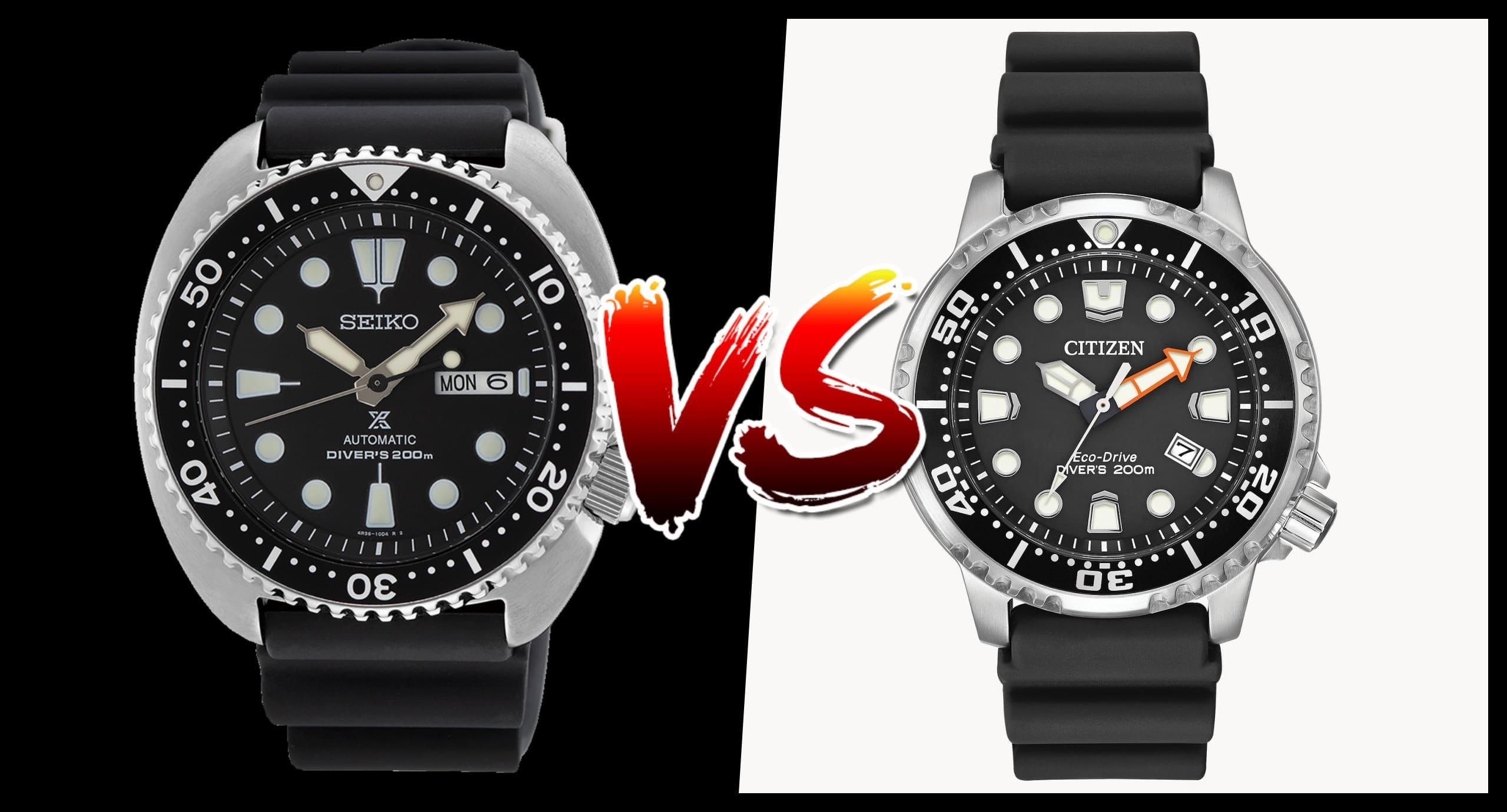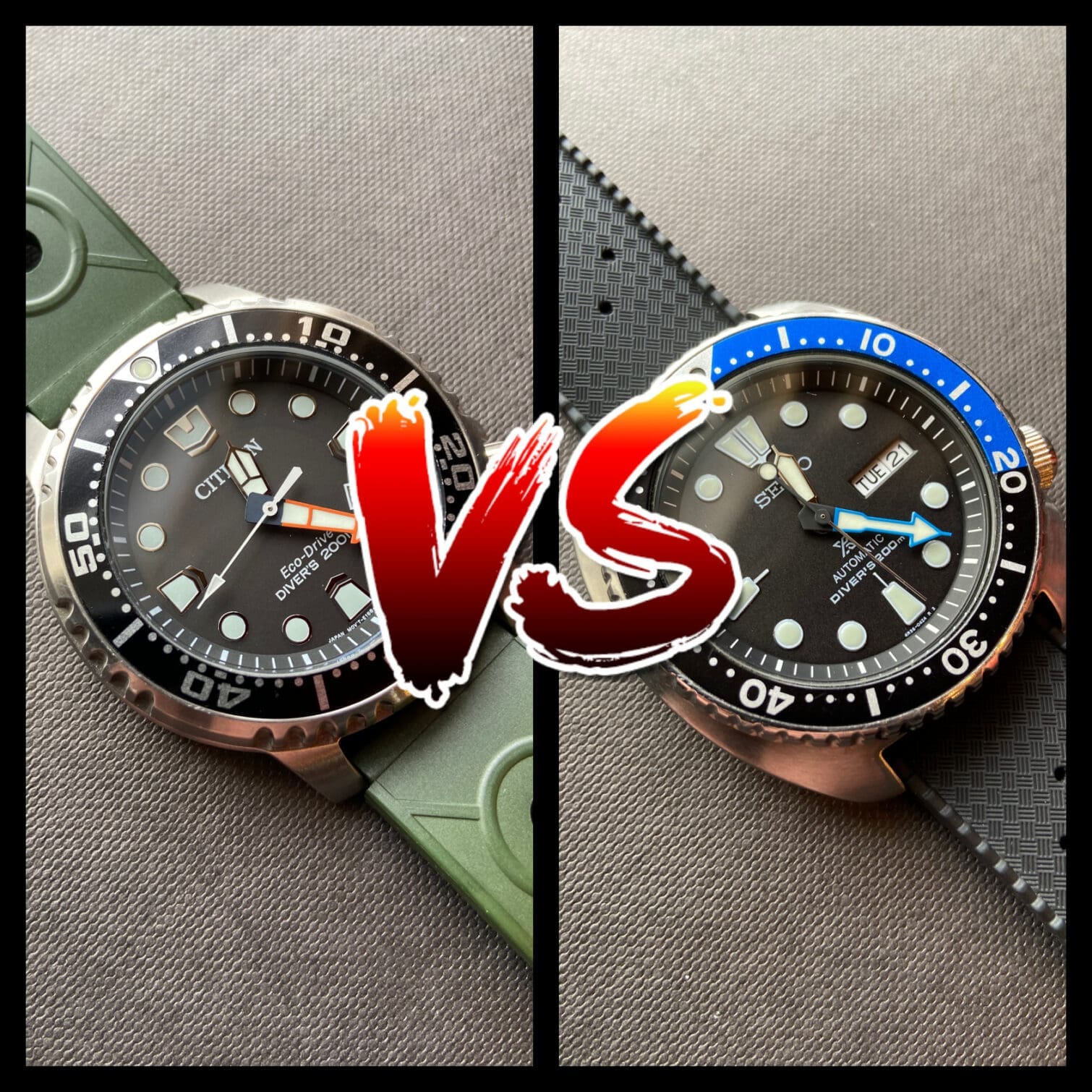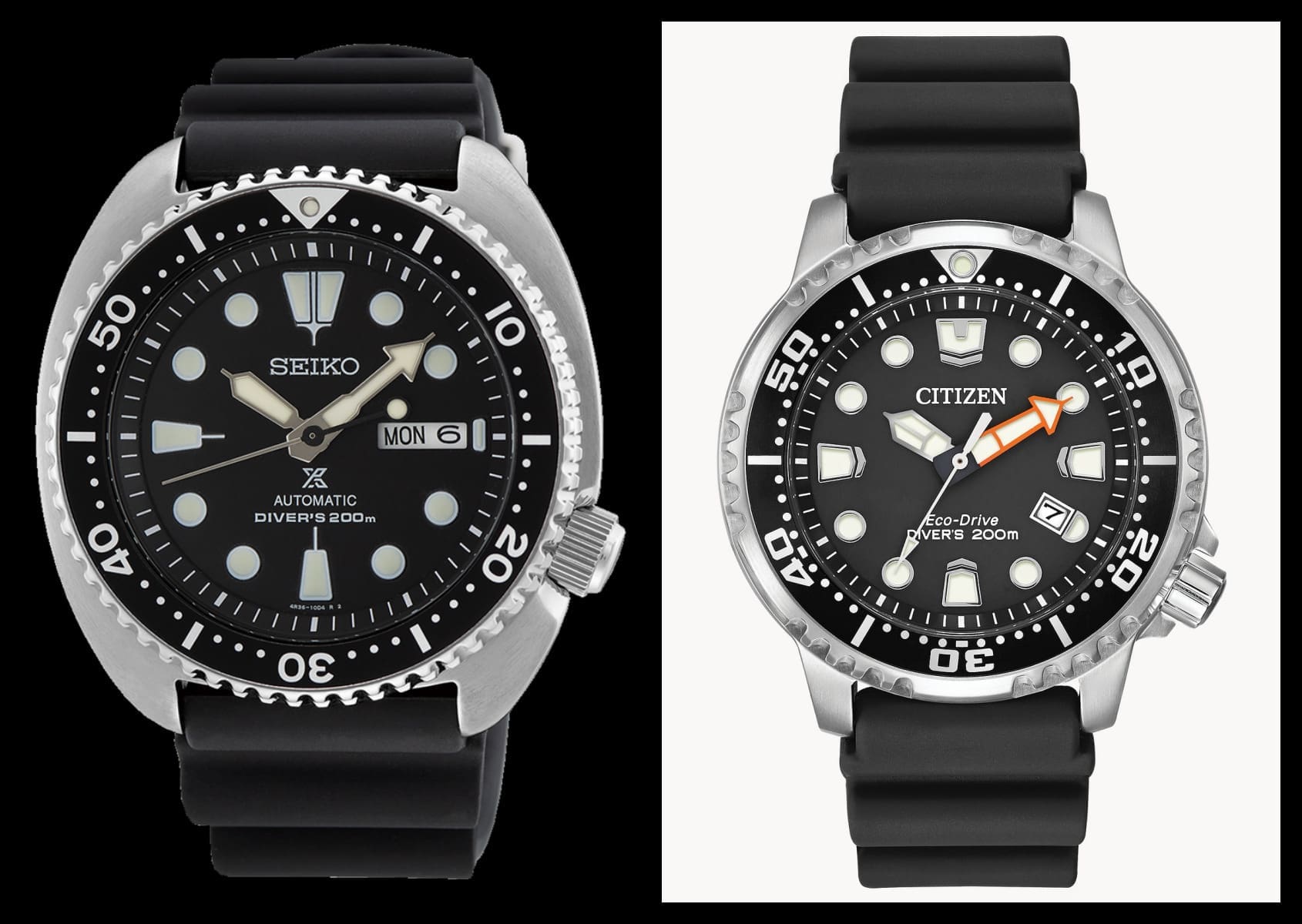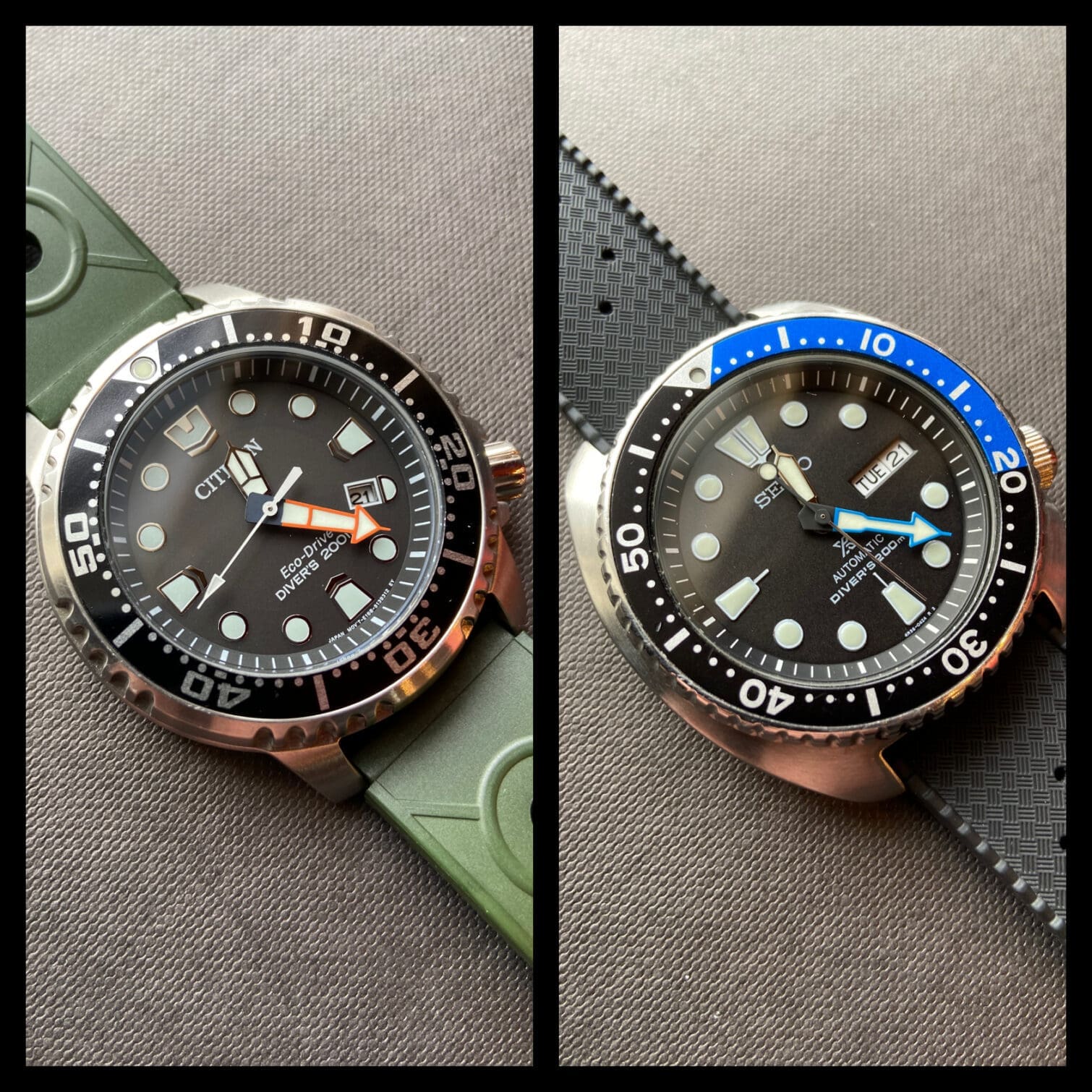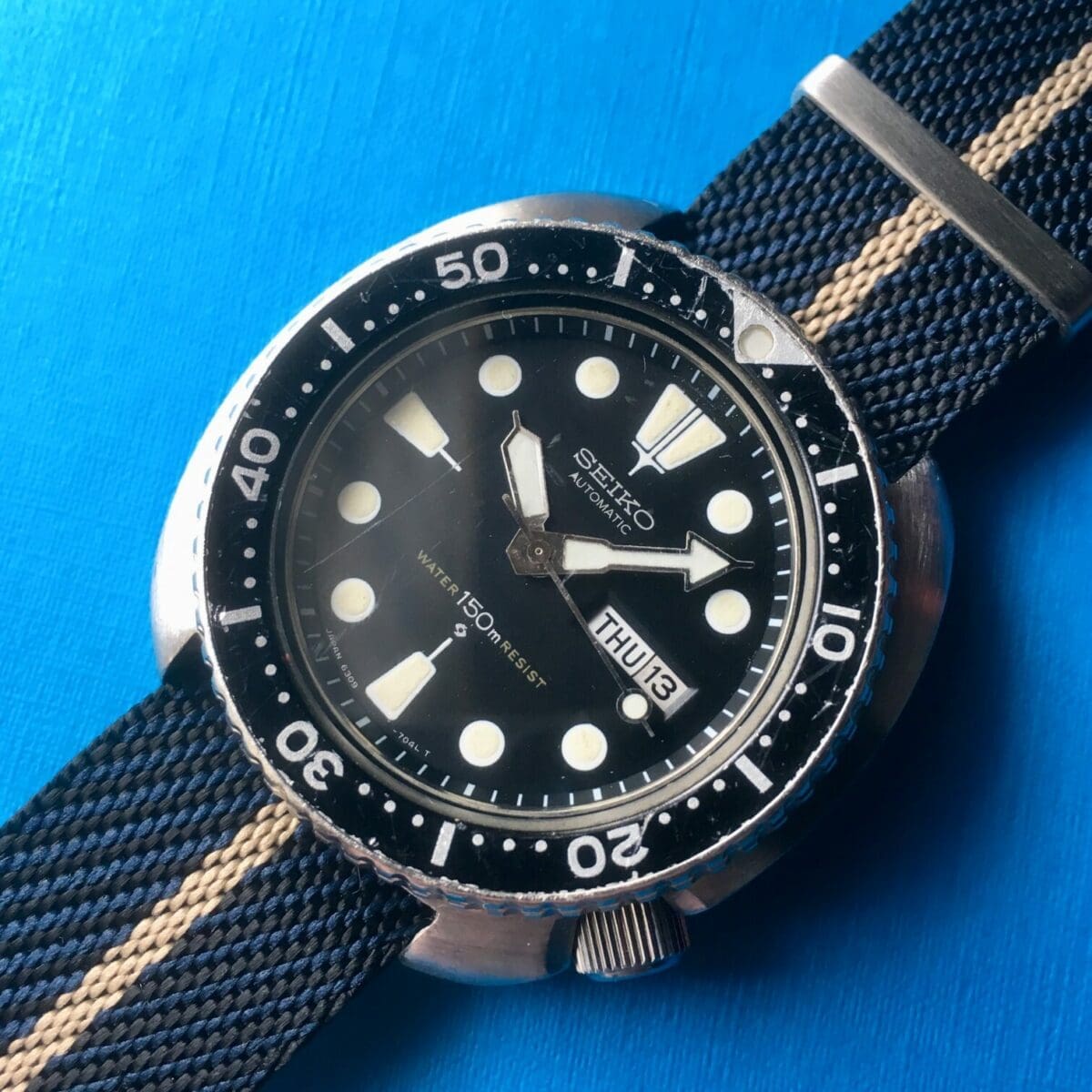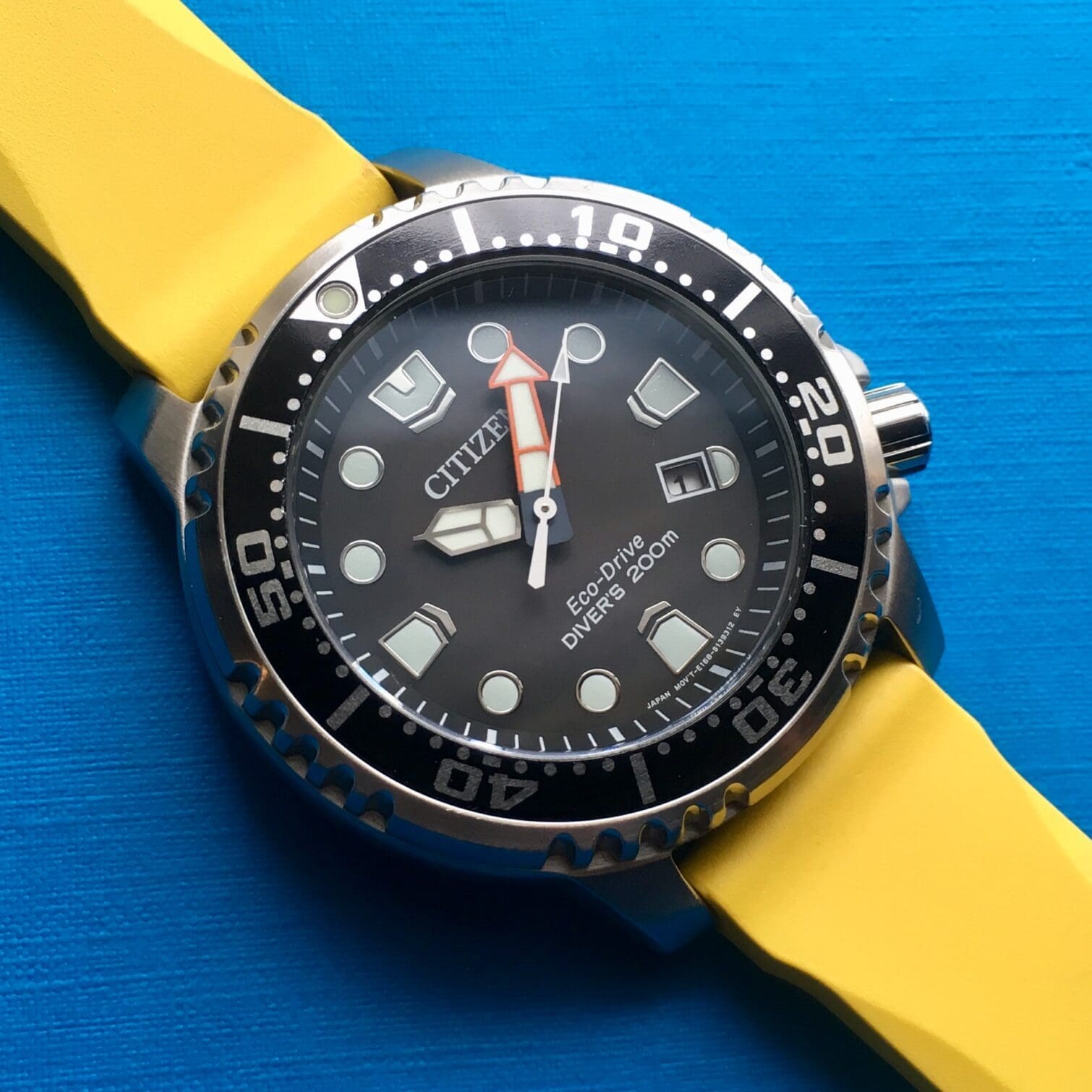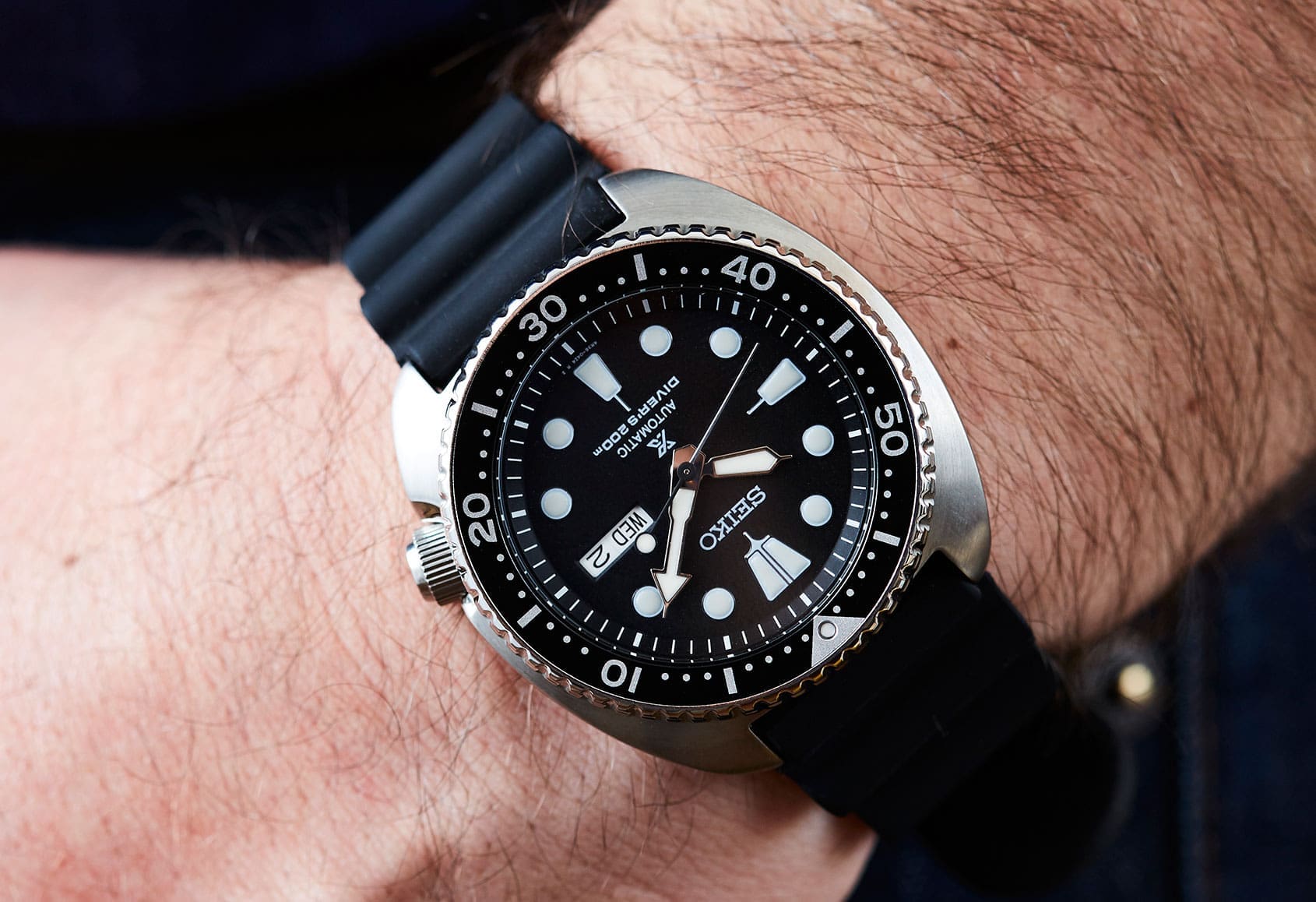VERSUS: The Seiko Prospex Turtle takes on the Citizen Promaster Dive for entry-level underwater supremacy
D.C. HannayIt’s another knock-down, drag-out street fight here on Versus, and this match-up pits two classic divers, the current version of the venerable Seiko Turtle against the bomb-proof Citizen Eco-Drive Promaster Dive. Once again, we match up two comparable watches in similar styles and price points, and compare their shared qualities, and the ones that set them apart. We’ve covered the ultra high-end, a pair of proper luxury divers, and two fantastic field watches, so I thought it was time to put a couple of contenders in the ring in one of the most popular categories among watch consumers, the entry-level diver.
| Brand | Seiko | Citizen |
| Model | Prospex Turtle SRPE93 | Promaster Dive BN0150-28E |
| Case Dimensions | 45mm (D) x 13.4mm (T) 48mm (L2L) | 44mm (D) x 12mm (T) x 48mm (L2L) |
| Case Material | Stainless steel | Stainless steel |
| Water Resistance | 200m | 200m |
| Dial | Black | Black |
| Crystal | Hardlex mineral crystal | Mineral crystal |
| Strap | Black accordion silicone | Black accordion polyurethane |
| Movement | In-house automatic 4R36 | In-house Eco-Drive solar quartz E168 |
| Power Reserve | 41 hours | 6 months on a full charge |
| Functions | Hours, minutes, seconds, day, date | Hours, minutes, seconds, date |
| Availability | Now | Now |
| Price | US$495 | US$375 |
Common ground: Capable diving tools on a budget
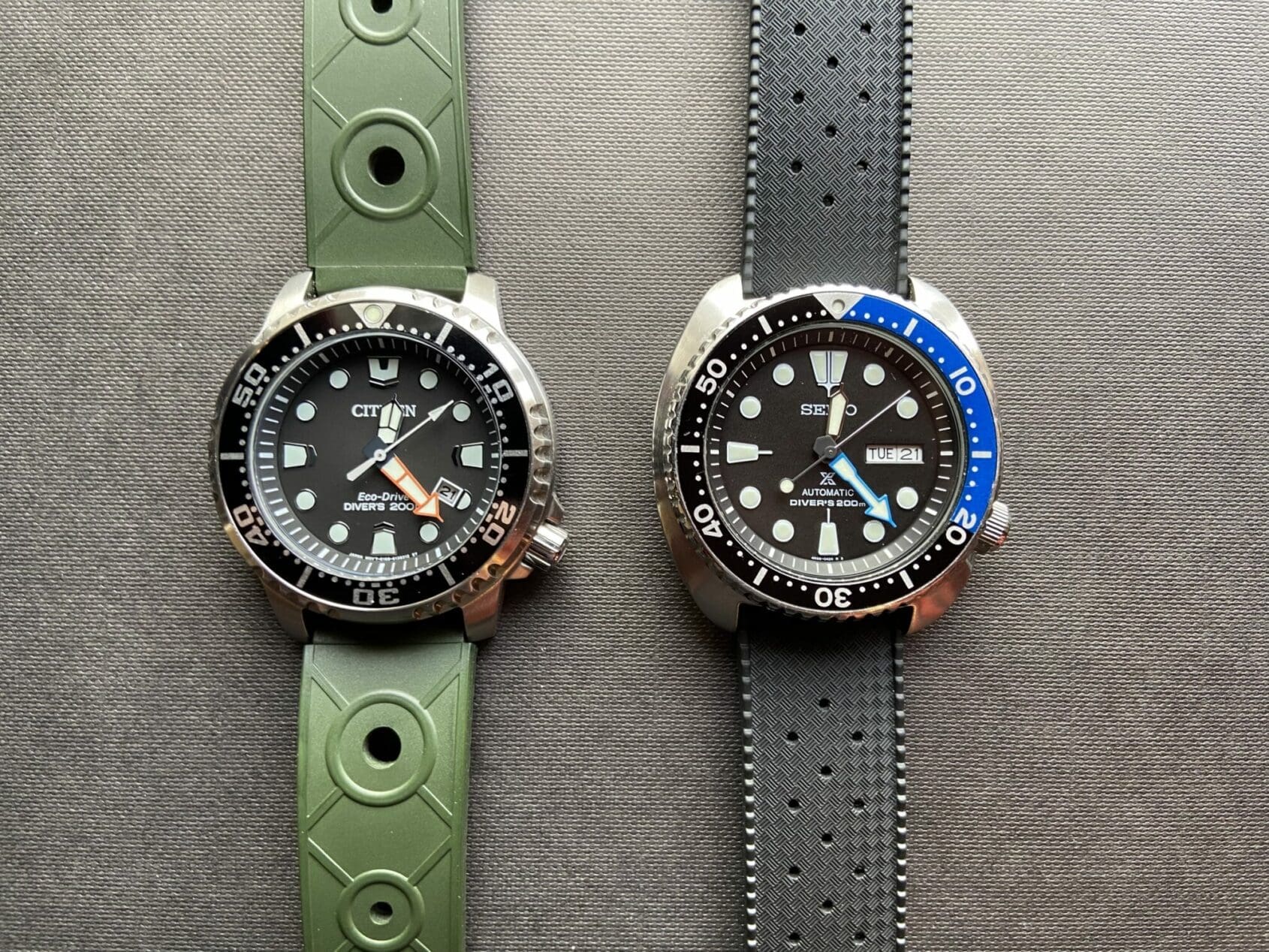
They also share highly legible white-on-black dials with sizable luminescent handsets and dial markers, along with black aluminium bezel inserts. Seiko’s bezel features 120 clicks, and the Citizen’s has 60, and they both work fine, so it’s a matter of preference. Both dials have a date indication, with Seiko’s also displaying the day of the week. But if you want to show a bit more flair, both watches are available in a variety of colourways, with Citizen offering blue, green, and even red versions (with more being added). And the Turtle? Let’s just say that if you have a favourite colour, Seiko has probably made a Turtle in it, so you’ve got options. For the sake of comparison, I’ve opted to look at both models in black. I have the advantage of actually owning both pieces, and although my Asian-market Turtle features blue on the hour hand and bezel, it’s the same watch underneath.
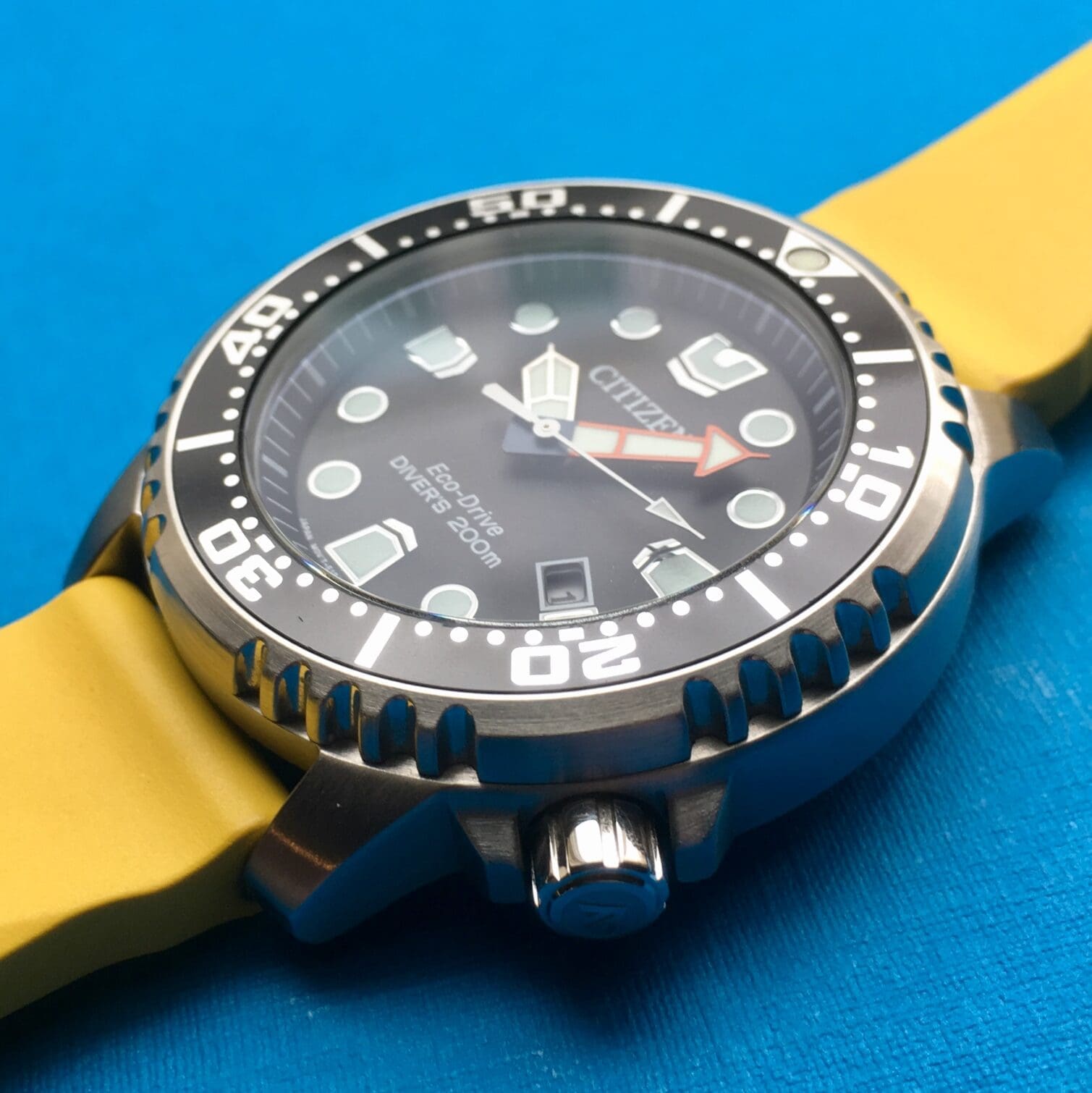
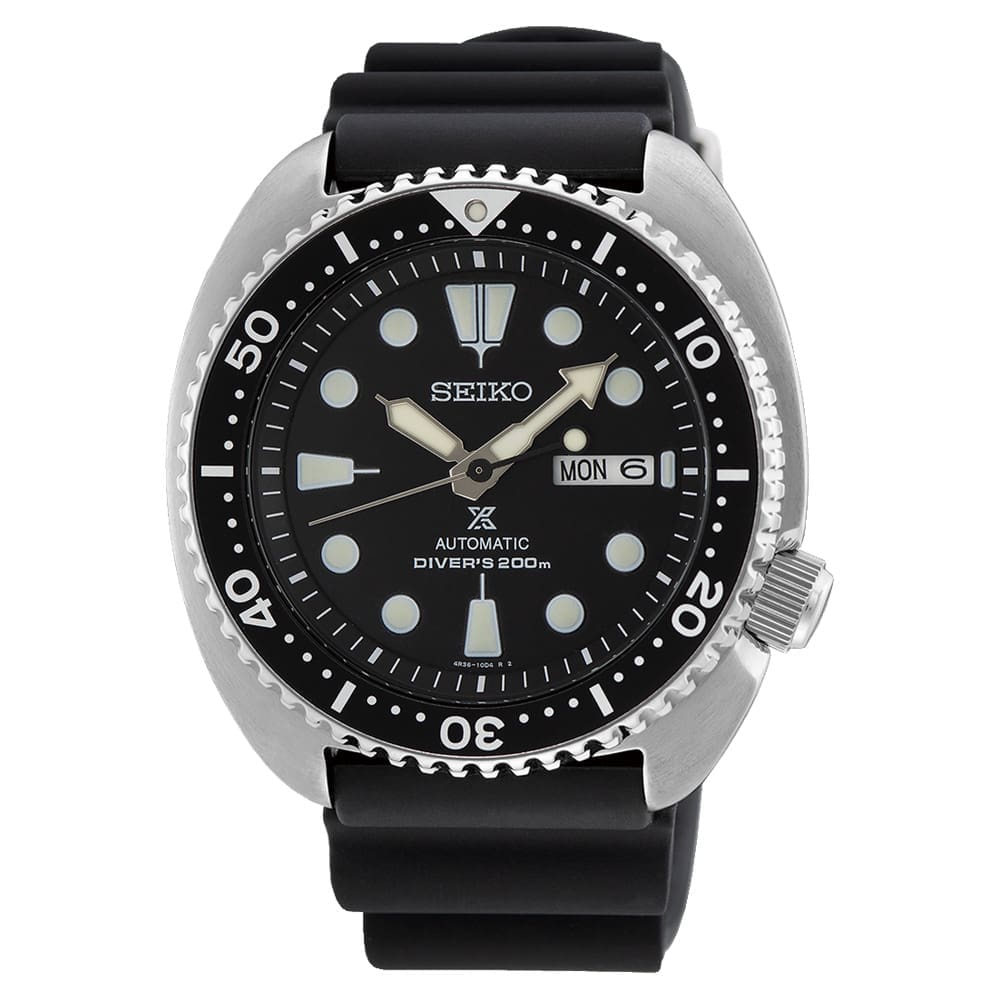
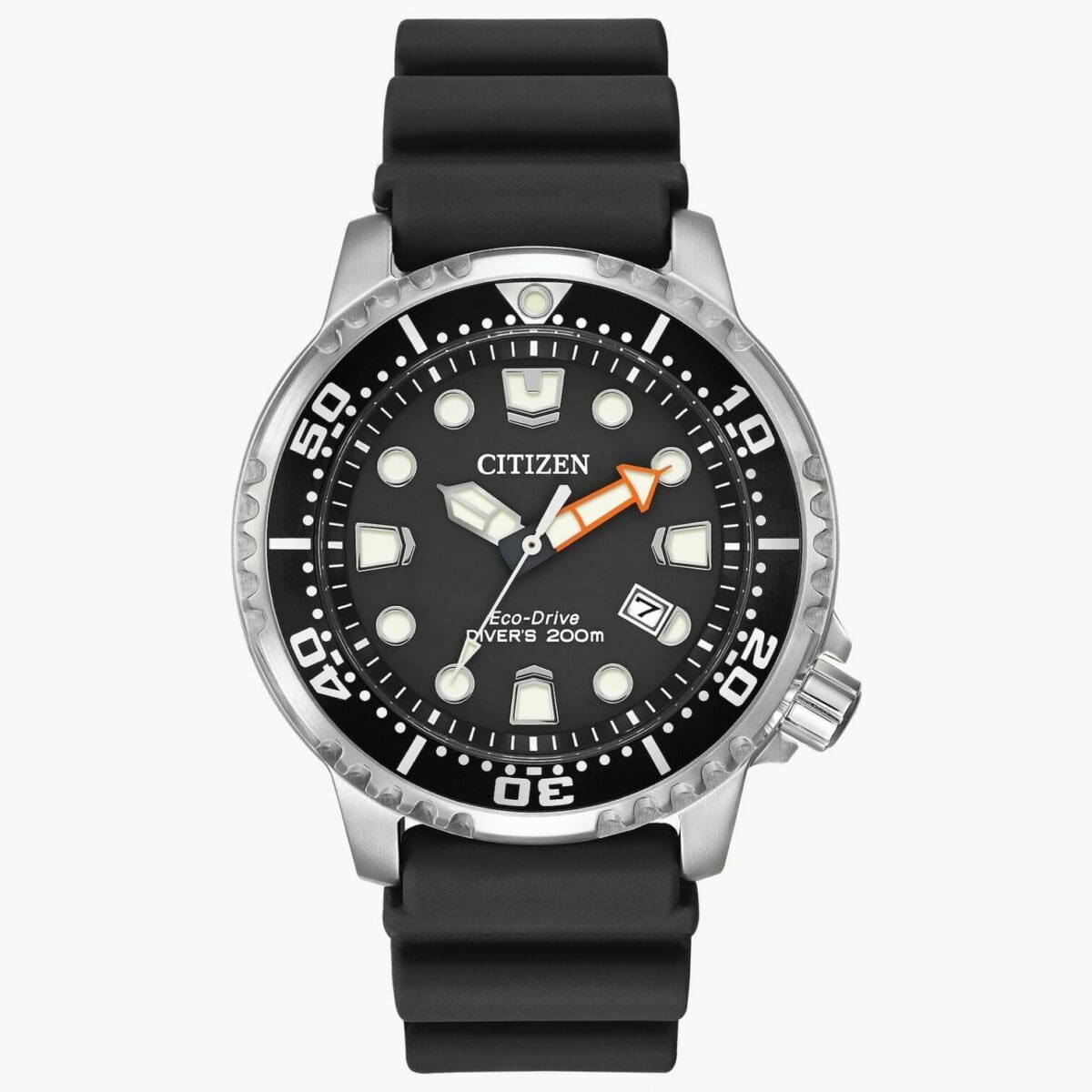
Where each stands apart: Heritage and a mechanical movement versus bulletproof solar quartz
Stylistically, the Turtle and the Promaster go in different directions while nominally existing as the same type of watch, with the Seiko presenting an iconic profile steeped in history, and the Citizen looking every bit the uncompromisingly brutalist chonk of metal it is. Yes, the Promaster has a less vaunted history than the Turtle, but Citizen does have their share of classic models, if less widely known, and this one is a proven tough design. I like ‘em both, and wear them according to my mood.
I have a strong sentimental connection to the Turtle, as the original 6309-7049 (above) was my gateway drug into “real” watches. The Citizen? That’s my don’t-think/grab-and-go piece. Aesthetics aside, the big difference is the movement in each. If you value tradition and heritage over convenience and practicality, you’ll likely choose the Seiko with an autowinding movement. The 4R36 is quite durable, and rarely breaks, but be aware, accuracy can vary wildly. I have several Seikos that keep decent time, within 4 seconds/day, but my Prospex Turtle has been running quite slow lately, to the tune of about -20 seconds/day, which is a bit sad. They can be regulated by a watchmaker, but whether the expense is worth it is a personal decision. I will say that many microbrands regulate their outsourced movements before they ship them out, so maybe Seiko could take a cue from their lead.
On the other hand, if you’re the type to set-it-and-forget-it, you can’t do much better than a Citizen Eco-Drive, unless you forgo a watch entirely for your iPhone. This no-brainer solar quartz movement isn’t as romantic as a mechanical caliber, but honestly, if you want one less thing to worry about, this is your watch. It’s a Toyota Land Cruiser with 250,000 miles on the odometer, happily puttering along without a care, and you don’t even have to change the oil (or battery, as the case may be). The Eco-Drive movement will run for 6 months on a full charge, and if you occasionally leave it near a window, it’ll never be an issue. Accuracy is obviously much greater with quartz, and you can expect to be within 5-15 seconds a month. Another thing to mention: While the Promaster is highly legible and features pretty decent lume, it can’t hold a UV candle to the eyeball-melting blowtorch that is Seiko’s LumiBrite. It’s not even close in terms of longevity and intensity, so consider that.
The verdict
The case for the Seiko Prospex Turtle: You can’t touch the history of a Seiko diver, especially a classic like the Turtle. There’s a baked-in snob appeal for the watch nerd, and even collectors with cost-no-object watch boxes will give it a nod. If you want a mechanical movement, this is the one for you, as long as you don’t mind dealing with the possibility of accuracy issues. Then there’s Dat Lume.
The case for the Citizen Promaster Dive: Given the issues that one can encounter with a mechanical movement, you have to give the accuracy award to Citizen, as well as the no-maintenance prize. I’ve owned several Eco-Drive models, and over many years, I have never had one problem with the movement. Not ever. So if you’re good with a ticking quartz movement over the elegant sweep of a mechanical one, you might want to give Citizen the nod. Style is a personal choice, so if you lean more modern over classic, that’s another tick in the Promaster column. As far as price, they’re pretty comparable, but Citizen gains a small edge here, as it has a lower list, and is discounted more often.
My pick: this is a surprisingly close toe-to-toe, given that I’m matching a mechanical watch against a quartz one, but after living with both for a good while, I have to say that they get nearly equal amounts of wear time. I’ve loved Seiko forever, and the Prospex Turtle scratches the itch when I don’t want to wear my vintage original. It looks fantastic, is super-legible, and one of the most comfortable things I’ve ever had on my wrist. On the other hand, the Promaster gets a ton of wear, especially since I switched to its current strap. I wore the snot out of this one when the pandemic started, as my hands were exposed to copious amounts of soap and sanitizer, and frankly, I didn’t want to worry about mucking up an expensive timepiece. It’s also quite legible, although in low light, the Seiko beats it like John Bonham pounding out When The Levee Breaks. But in practical terms, it does everything I need a watch to do, with zero issues and no complaints.
But the heart does things that your head may not agree with. It was a close one, but by the narrowest of margins, I have to give the edge to the Seiko Prospex Turtle. It’s just a more bona fide watch collector’s experience, and this is coming from a staunch anti-snob, with plenty of lowly quartz pieces in the collection. Functionally, the Citizen beats it in several areas, but the Turtle has what a lot of watch fans look for, and at a very reasonable price. Real heritage that goes back to the original Turtles of the ‘70s, a mechanical movement, a nicer-feeling bezel, and that infamous Seiko lume all push the Turtle past the finish line in this very close race.




